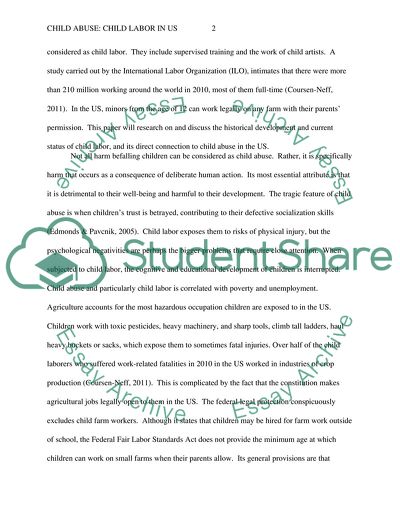Cite this document
(Child Abuse: Child Labor in US Essay Example | Topics and Well Written Essays - 1500 words, n.d.)
Child Abuse: Child Labor in US Essay Example | Topics and Well Written Essays - 1500 words. https://studentshare.org/sociology/1813924-child-abuse-child-labor-in-us
Child Abuse: Child Labor in US Essay Example | Topics and Well Written Essays - 1500 words. https://studentshare.org/sociology/1813924-child-abuse-child-labor-in-us
(Child Abuse: Child Labor in US Essay Example | Topics and Well Written Essays - 1500 Words)
Child Abuse: Child Labor in US Essay Example | Topics and Well Written Essays - 1500 Words. https://studentshare.org/sociology/1813924-child-abuse-child-labor-in-us.
Child Abuse: Child Labor in US Essay Example | Topics and Well Written Essays - 1500 Words. https://studentshare.org/sociology/1813924-child-abuse-child-labor-in-us.
“Child Abuse: Child Labor in US Essay Example | Topics and Well Written Essays - 1500 Words”. https://studentshare.org/sociology/1813924-child-abuse-child-labor-in-us.


